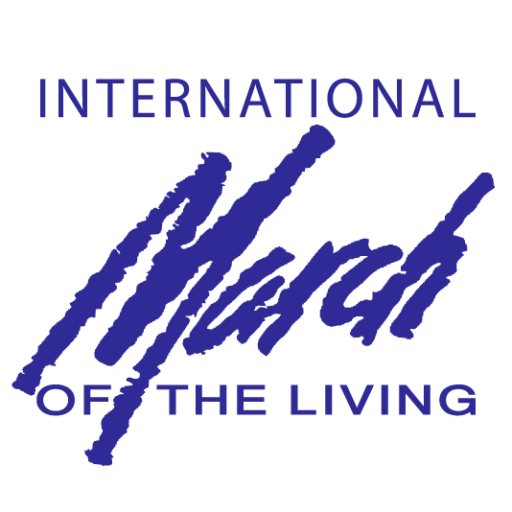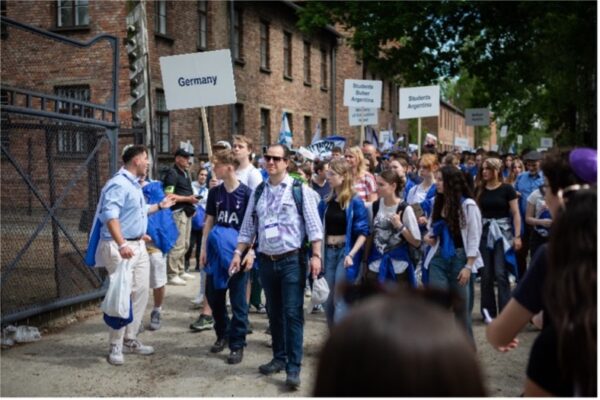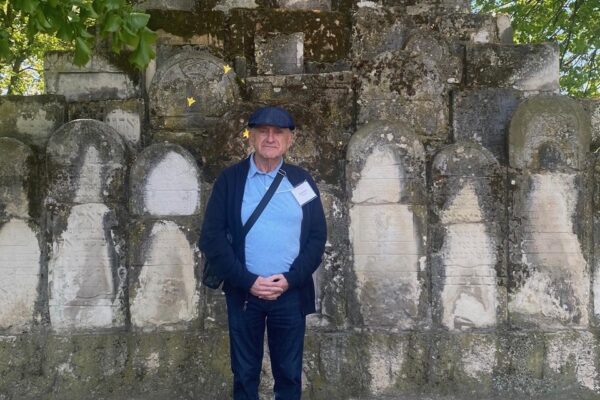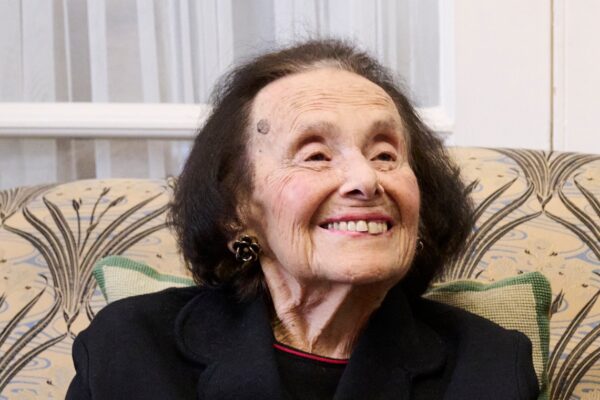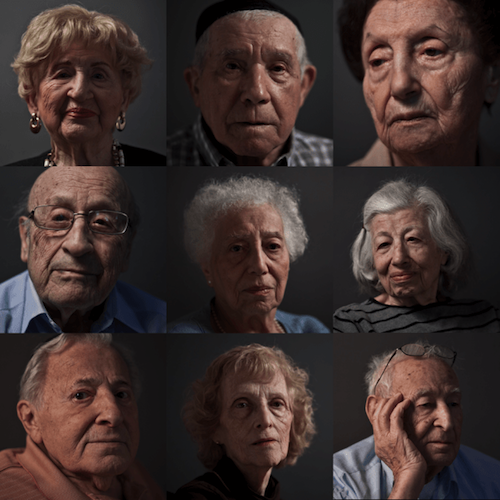
Frances is lonely, even though her son takes care of her. She collects used aluminum foil in a kitchen piled high with paper plates. She relies on an emergency wristband to call for help. When you ask her to, she is able to vividly recall the worst of her World War II experience. She displays a mix of shame and trepidation when deciding whether to roll up her sleeve and show the world her forearm, tattooed at Auschwitz.
The truth is that Frances, like all Holocaust survivors, is old. Like many survivors, she’s dependent on Jewish and social welfare. She’s not living as well as she deserves to live. One day, not long from now, Frances and the others like her will die. Then there will be no more Holocaust survivors left.
Writer Ron Rosenbaum once noted in these pages that one of the greatest risks of Jewish life today is the smothering sentimentalization of our memory of the Shoah. Frances’ closing chapter offers no “meretricious uplift.” The fact that she survived Auschwitz only to suffer at the end of her life is appalling and embarrassing. These are painful things to think about, let alone say. And part of the uneasiness comes from the way wealthy and comfortable American Jews have used “remembering the Holocaust” as the touchstone of their communal existence.
When a recent, highly publicized and debated Pew study asked, “What does being Jewish mean in America today?” an astonishing 73 percent of U.S. Jews replied that “remembering the Holocaust” was “essential to their sense of Jewishness.” Another 69 percent also cited “leading an ethical life.” More than half (56 percent) said that “working for justice and equality is essential to what being Jewish means to them.” To U.S. Jews, more important than any other identifying factor was this bizarre enshrinement of memory.
How then Frances?
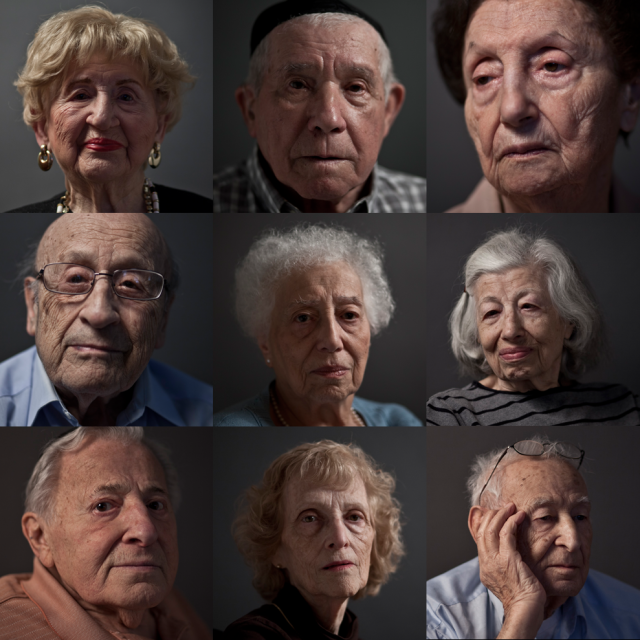
World War II ended nearly 70 years ago. Even accounting for those who lived through the war as opposed to having directly suffered its most terrible expressions, the number of survivors still alive today across the world is probably in the low hundreds of thousands, and dwindling. Earlier this month, after an initiative announced by Vice President Joe Biden, the U.S. Senate’s Special Committee on Aging noted in a hearing on Holocaust survivors that one fourth of the roughly 140,000 survivors in America live at or below the poverty line. Some other estimates put more than half of the survivors living in the United States below 200 percent of the Federal Poverty Level, meaning they earn less than $21,660 annually. The problem is serious enough that last week, the Obama Administration named the first Special Envoy for U.S. Holocaust Survivor Services, charged with caring for this population. “Living in poverty, plagued by immeasurable loss, they are at risk of falling into isolation and despair,” Lee Sherman, the president of the Association of Jewish Family and Children’s Agencies, told the Senate. According to Elihu Kover of Nazi Victim Services for Selfhelp Community Services, more than half of the thousands of survivors who live in New York City can be classified as “very poor” or “near poor” under federal guidelines.
At the Senate hearing, Kover put it even more starkly: “Holocaust survivors are growing older and frailer. The twenty-year-old who survived Auschwitz is now eighty-eight. She may be coping with the loss of her spouse and have no family to speak of. In addition to the myriad problems associated with so-called ‘normal aging,’ many survivors have numerous physical and psychological problems directly attributable to their experiences during the Holocaust. Prolonged periods of starvation, exposure to severe weather conditions with inadequate clothing, and experiencing and witnessing unspeakable atrocities take a severe toll on body and mind. And many of these problems only surface in old age, having been hidden during their working years when the survivors struggled and made a new life for themselves as productive citizens of this country.”
On this day in 1945, the largest Nazi death camp, Auschwitz-Birkenau, was liberated by Soviet troops. In 2005, the United Nations declared Jan. 27 an international memorial day for the victims of the Holocaust. In honor of this, we asked photographer Jason Florio to take humane portraits of a small sampling of New York’s Holocaust survivors—to avoid remembering the Shoah in the abstract, and to remind our readers of the dignified specificity of each survivor’s life.
We’ve gathered nine portraits, with short audio interviews. We are not thepsychiatrists of Yale’s “Video Archive for Holocaust Testimonies,” facing facts for the first time. We are not Steven Spielberg or the U.S. Holocaust Memorial Museum, archiving oral and visual history. We aren’t a filmmaker, artist, or writer, grappling for years with the complicated moral, aesthetic, and historical legacy of the Shoah, like Claude Lanzmann, Art Spiegelman, or Aharon Appelfeld. We are American Jews remembering the Holocaust, without forgetting its survivors. We hope you’ll take a few minutes of your time today to do so, too, by scrolling below.
Age: 90 • Born: Poland
“I remember my mother asking my father—I was 12 years old then. My mother asked him, ‘Should I pack anything?’ He said, ‘No. Just pack the tallis and the tefillin.’ Because maybe I’ll have a chance to live, to daven one more night, day.”
Frances Irwin, the only survivor [listen] of eight sisters and brothers,lives alone in a fourth-floor apartment in the Midwood section of Brooklyn. In a glass case, she keeps a collection of tchotchkes, and on a wall of the study, piled with letters and bills, is an improvised mural of nametags from a lifetime of speaking engagements and volunteerism. She watches Shalom Television on channel 138 and wears a Tikvah bracelet, for which she pays $15 a month, to alert someone in case of emergency. A painted portrait of her son hangs over her bed. “He pays my bills so I can live OK,” she says. “But others don’t have all this, and they don’t behave like survivors.”
Age: 87 • Born: Hungary
“I got myself an education here. I didn’t have enough money to survive so I also worked weekends for weddings, checking coats, then in the summertime I became a waiter or busboy in the hotels. So I had enough money to sustain myself.”
Hymie Steinmetz tells the harrowing story of Nazi soldiers moving into his family’s home in Hungary, pushing him and his six brothers and sisters into one room, and later sealing the doors to the family business—all in an uninflected voice tempered by years of telling. “But forget about it,” he adds, sitting in a sofa chair across from the television in his Kensington apartment. On the wall are framed mementos and clippings from his liberation from Auschwitz, his refuge in Sweden, and his arrival to America: photos of steamer ships, bunkmates, news clippings, portraits of family members lost and since gained. On the boat to America from Sweden, he wrote a book about his experiences in the war, but in the confusion and physical pain lost it [listen]. Now his children and grandchildren are asking him to write it again. “The pain that I would go through to really start thinking back,” he says. “But it is a duty of every person, every survivor, to go and tell people what transpired in Germany.”
Age: 88 • Born: Poland
“I went to the Jewish organization, I said, ‘I’ve got money, give me a passport to go out of Poland.’ ”
Miriam Wenger is as boisterous and energetic an octogenarian as you are likely to find—almost defiantly joyful, determined to, as she says, “put music … dance … cheer up.” When confronted at the local bank recently with a woman walking with a cane after a stroke, Wenger’s answer was to exclaim, “Oh, you came out very good! You have speech. And you walk. You’re going to be fine!” Still, Wenger calls this new friend every day, takes her to the theater, telling her, “You are going to be a happy girl.” This can seem surprising from someone who once picked grapes barefoot in a refugee camp in Palestine, after being chased from Poland and Romania and walking across the Alps, and whose dreams were haunted for years by echoes of Nazis shouting, “Catch the Jewish people! Kill the Jewish people!” But other things about her tiny Upper West Side apartment also show the mark of an ambitiously engaged, if limited, person: piles of letters, a seated-exercise machine, a desk with a working PC, and notepads by the phone for when someone in need calls.
Age: 82 • Born: Mannheim, Germany
Ruth Wertheimer has lived and worked in Washington Heightssince 1948. She goes to the senior center two blocks away every day for an affordable lunch—“Glatt Kosher,” she says, “it’s delicious”—whose packed-up leftovers provide the meal for the night. To get her talking about the past is to hear an absorbing, confusing mix of nostalgia for the lost beauty of her Oma, sugar cubes, and a “stunning synagogue,” paired with tales of standing in mud up to her knees, hiding in a convent, riding kindertransport as an orphan [ listen], and the rats, mice, lice, and other things she can’t forget. Does she get help now? “Nobody except myself,” she says.
Age: “Past 65” • Born: Poland
Simon Goldsmith’s modest second-floor apartment is in a residential part of Brooklyn’s Flatlands neighborhood. During our visit, his phone rang four times, and each time he answered in an unfailingly cheerful manner. (“I hope you don’t mind, I have people here and I can’t talk to you right now … call me back later … thank you, thank you, thank you.”) He has piles of bills and philanthropic queries on his kitchen table, and on top of the stacks sits a framed photo of his beautiful late wife, who died two years ago—“the nicest dancer at the parties,” he says. His fridge is full of deliveries from the local JCC, of which he is a member. After a small party of Yeshiva University High School girls finishing a project on the Holocaust drop off a charitable food delivery, Goldsmith tells them, “Come a little more often. I’ll do everything you want me to do. I’ll give a nice interview, too.”
Age: 83 • Born: Romania
“The compensation is never going to replace what I saw, what I went through, when I was in camp a young boy. No matter how much money in the world they give you or how much money I get, it’s nothing.”
Boris Shkolnik has calloused strong paws that envelop your own in a warm grip. Though he has lived in the United States since 1984, most recently in a rent-controlled apartment off Grand Concourse in the Bronx, he never became more than conversant in English; he never needed more for his work making deliveries. When we met him, in the company of his daughter Anya (who translated) and son-in-law Isaac, Shkolnik showed us his Deutsche Rentenversicherung papers—the oddly anodyne “Claim for old-age pension for former ghetto workers residing outside Germany”—from which he pays sundry bills for TV, phone, utilities, and rent. “I want to show him how young I was when they took us away,” he said in Russian to Anya, reaching for the copy of the form. A town name on the page reminded him of something he’d seen: “a thousand, four thousand, 50 thousand Jews, walking.” And in the box labeled “Other names used in the past,” Shkolnik had written in big block letters: AVROM BARUCH. “Here it is,” he said. “I was 9 years old.”
Age: 75 • Born: Czechoslovakia
“To have gotten compensation, you had to provide certain details. I was a little girl. I was 7 when the war was over. What could I provide?”
Irene Hizme’s oral history is enshrined at the U.S. Holocaust Memorial Museum in Washington, D.C. She and her twin brother, René Slotkin, have also been the subjects of a documentary film, a book by Lucette Lagnado, and news reports from People to The Jewish Week, because she is, as she told the New York Times in 1991, a member of “the most exclusive club in the world”: the Mengele Twins [listen], so named for the Nazi physician at Auschwitz-Birkenau whose monstrous experiments on Jewish siblings was part of the plan to engineer a master race. In America, she became a biochemist and computer programmer. “Is it possible that on a subconscious level my experience led me to this?” she says. “I don’t know.” From her comfortable home inOceanside, Long Island—where despite advanced MS she produces Hebrew calligraphy and counts herself a marathoner—she reminds us that the needs of Holocaust survivors are more than material.
Age: 88 • Born: Riga, Latvia
Jack Ratz’s home in Mill Basin is a private museum to his life and family: Every available flat surface and wall space is set with framed portraits of his kin and with certificates of appreciation, awards, news clippings—all in recognition of his role and efforts as a survivor. (A citation from the State Supreme Court of New York causes special pride.) In the United States, he eventually became what he calls “a television man,” until the arrival of the microchip, which made his repair skills obsolete. He joined the MTA as an electrician, on light duty because of a bad heart. He wrote and self-published his autobiography,Endless Miracles. Now when he speaks to high-school students, he has them consider that at the age they entered as freshmen, he entered the ghetto. You become a junior? He graduated to a concentration camp. Senior, traveling to see which college might tempt you? “I traveled on a death march.” Ratz, who is small in stature but thick-chested, says he doesn’t need the financial support various Jewish organizations have offered him. But he takes some anyway because it makes the memory more real, somehow. “No matter how much you’re going to pay,” he says, “it won’t pay me back for my brothers who were shot and killed back in ’41.”
Age: 80s • Born: Kosice, Czechoslovakia
“I never requested anything from Jewish agencies. I didn’t even know that other Jewish agencies help you. I just didn’t. No, I never got anything from anybody.”
Katherine Noire, who is legally blind, isn’t a struggling Holocaust survivor of the kind you might encounter in the New York Times’ “neediest cases” holiday campaign. She lives in a spacious, clean apartment on the Upper West Side of Manhattan, under the alert and protective care of her daughter and son. In her living room, on a polished-wood credenza, sits a beautiful ceramic bust of her late husband, and on the walls hang tastefully framed oil paintings. But her historical lot—“a matter of luck,” she says: to have survived forced labor at a factory where German hand-grenades were manufactured [listen]—remains a burden, and doubly so now that her memory is going. “It’s very difficult to cope,” she says. “I cannot do what I want to do.”
